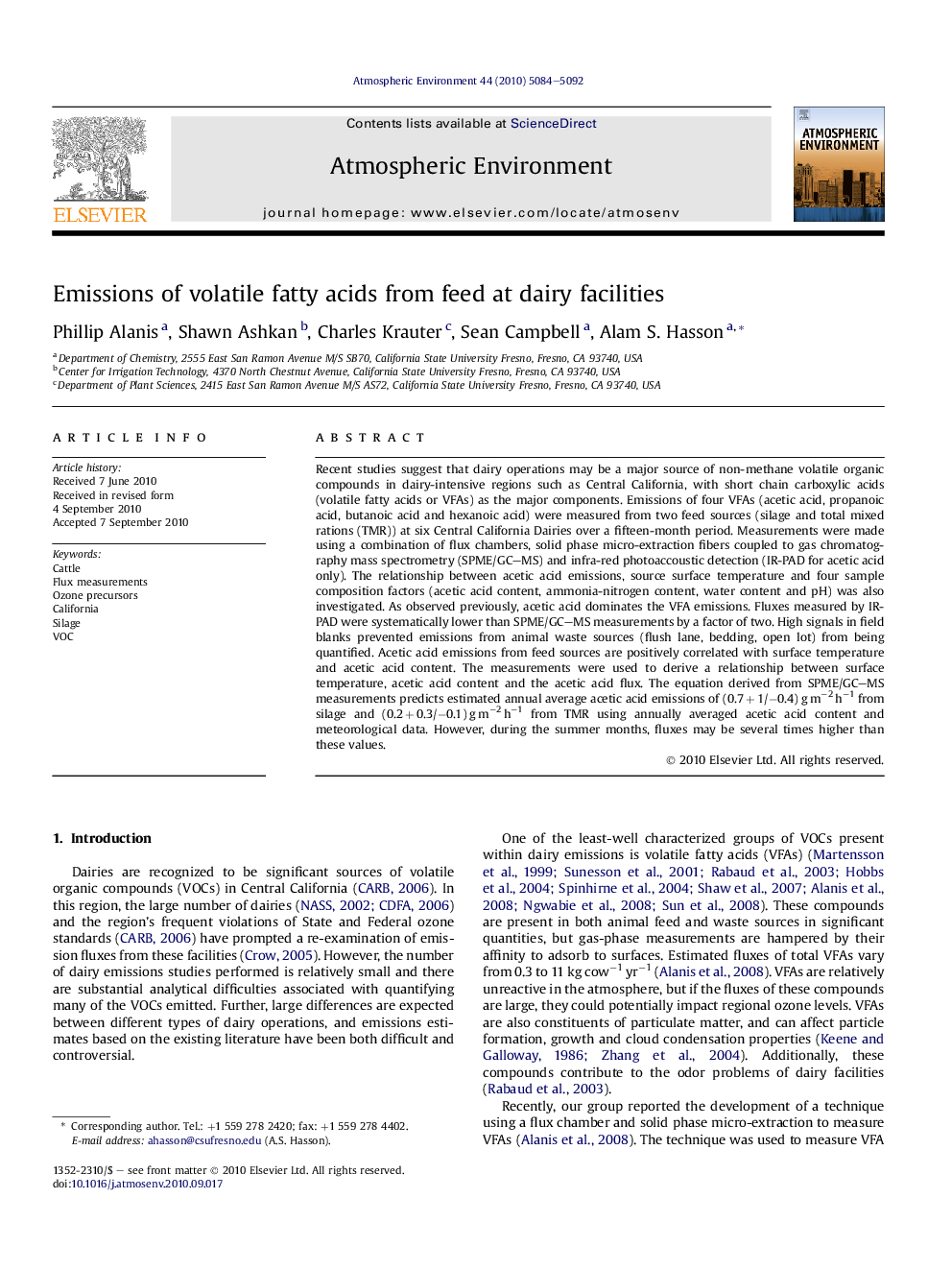| کد مقاله | کد نشریه | سال انتشار | مقاله انگلیسی | نسخه تمام متن |
|---|---|---|---|---|
| 4440456 | 1311061 | 2010 | 9 صفحه PDF | دانلود رایگان |

Recent studies suggest that dairy operations may be a major source of non-methane volatile organic compounds in dairy-intensive regions such as Central California, with short chain carboxylic acids (volatile fatty acids or VFAs) as the major components. Emissions of four VFAs (acetic acid, propanoic acid, butanoic acid and hexanoic acid) were measured from two feed sources (silage and total mixed rations (TMR)) at six Central California Dairies over a fifteen-month period. Measurements were made using a combination of flux chambers, solid phase micro-extraction fibers coupled to gas chromatography mass spectrometry (SPME/GC–MS) and infra-red photoaccoustic detection (IR-PAD for acetic acid only). The relationship between acetic acid emissions, source surface temperature and four sample composition factors (acetic acid content, ammonia-nitrogen content, water content and pH) was also investigated. As observed previously, acetic acid dominates the VFA emissions. Fluxes measured by IR-PAD were systematically lower than SPME/GC–MS measurements by a factor of two. High signals in field blanks prevented emissions from animal waste sources (flush lane, bedding, open lot) from being quantified. Acetic acid emissions from feed sources are positively correlated with surface temperature and acetic acid content. The measurements were used to derive a relationship between surface temperature, acetic acid content and the acetic acid flux. The equation derived from SPME/GC–MS measurements predicts estimated annual average acetic acid emissions of (0.7 + 1/−0.4) g m−2 h−1 from silage and (0.2 + 0.3/−0.1) g m−2 h−1 from TMR using annually averaged acetic acid content and meteorological data. However, during the summer months, fluxes may be several times higher than these values.
Journal: Atmospheric Environment - Volume 44, Issue 39, December 2010, Pages 5084–5092